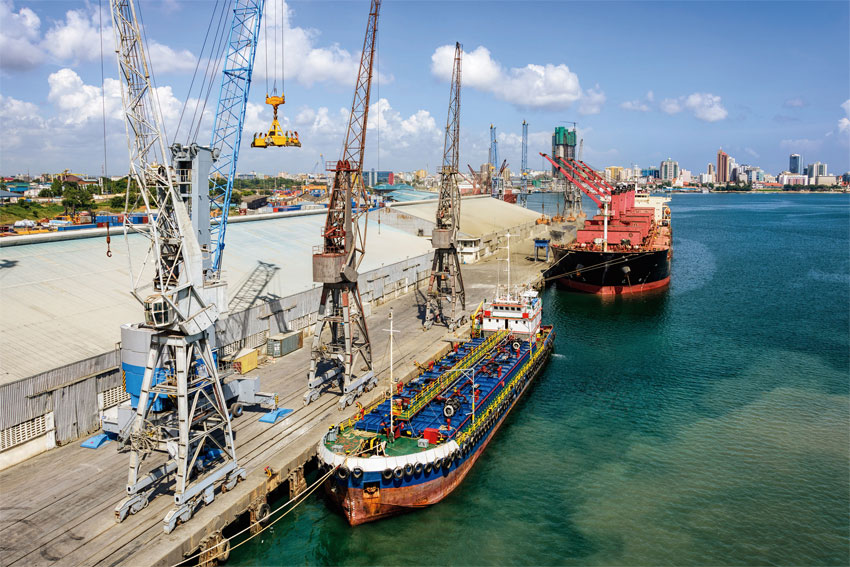Demand for power, roads, railways, internet and other infrastructure in Africa is set to soar in the coming years, providing investment opportunities and socio-economic benefits across the continent

Infrastructure has played a significant part in Africa’s recent economic upturn, and will need to play an even greater role if the continent’s development targets are to be reached. Simulations suggest that if all African countries were to catch up with Mauritius in infrastructure, per capita economic growth in the region could increase by 2.2 percentage points. Catching up with Korea’s level would increase economic growth per capita by up to 2.6% per year. In a number of countries – including Côte d’Ivoire, the Democratic Republic of Congo (DRC), and Senegal – the impact would be even larger.
In most African countries, particularly the lower-income nations, infrastructure is a major constraint on doing business and is found to depress productivity by around 40%. For many countries, the negative impact of deficient infrastructure is at least as large as that associated with corruption, crime, and financial market and red tape constraints. Power, or a lack of it, emerges as the most limiting factor in some areas, and is cited by more than half of firms in more than half of African countries as a major obstacle in doing business. In addition, deficiencies in broader transport infrastructure and infrastructure for information and communication technologies (ICT) are less prevalent, but nonetheless substantial in some cases.
Africa’s leading continental organizations all highlight the importance of regional infrastructure for the continent’s growth. The average economic growth rate for African countries, which is predicted to be 6% per year between 2010 and 2040, is driven by a surging population, increasing levels of education and technology absorption. This growth implies that, over the 30 years to 2040, the GDP of African countries will multiply sixfold, and the average per capita income will rise above $10,000 for all nations. This continuing expansion and prosperity will swell the demand for infrastructure, particularly in three main fields.
Firstly, power demand will increase from 590 terawatt hours (TWh) in 2010, to more than 3,100 TWh in 2040. This growth rate would be similar to India’s over the past three decades. Since 2005, the average annual rate of growth in Africa has exceeded 5%. To keep pace, installed power generation capacity must rise from present levels of 125GW to almost 700GW in 2040.
Secondly, transport volumes will increase by six to eight times, with a particularly strong increase of up to 14 times for some landlocked countries. Port throughput will rise from 265 million tons in 2009, to more than 2 billion tons in 2040.
Thirdly, ICT demand will swell by a factor of 20 before 2020 as Africa catches up with broadband. Demand, which stood at around 300 gigabits per second in 2009, will reach 6,000 gigabits per second by 2018.
This growing infrastructure demand presents a critical challenge for Africa as it competes in global and regional trade markets that rely on just-in-time production and flexible, speedy and reliable delivery. By just about any measure of infrastructure coverage – whether road density, telephone density, generation capacity or service coverage – African countries are lagging behind. In addition, the AfDB’s Private Sector Development Strategy estimates that infrastructure services in Africa cost twice as much on average as those in other developing regions and notes that tariffs are exceptionally high. East Asian firms save close to 70% in transportation costs compared to their African counterparts, while Latin American and South Asian firms save approximately 50%. Closing the infrastructure deficit is vital for economic prosperity and sustainable development. But it is a regional and continental problem that requires a regional and continental solution.
Two countries reaping the benefits of such vital investment, albeit in different ways, are Uganda and Angola. Last year the Ugandan government allocated half of its budget towards infrastructure. Moreover, according to the Ugandan Minister of Works and Transport John Byabagambi, a 10-year, $11 billion program has been planned to upgrade the country’s transportation network and power generation capacity. In addition, there are plans to invest $2 billion in roads this year and another $2.5 billion in the Standard Gauge Railway. Road transport is by far the most dominant mode of transport, carrying over 90% of passenger and cargo traffic, and with the number of cars being sold to an ever emerging Ugandan middle class, roads will be of even more importance in years to come.
Another infrastructure success story can be found in Angola – which has effectively been rebuilt in a little over 10 years following the end of a civil war that left the country in ruins. Angola has since made remarkable progress, something that can be attributed to judicious government projects such as the National Urbanism and Housing Program, designed to rebuild the country’s infrastructure.
The massive potential for infrastructure in Africa is beginning to attract international investors too, with this year seeing Ugandan President Yoweri Museveni and the China Harbor Engineering Company agreeing to a $3.2 billion, 476km railway route through Kenya, Uganda, South Sudan and on to Rwanda. With the potential for infrastructure investments in its current position it won’t be long before other parties are racing to get a slice of the action.
0 COMMENTS